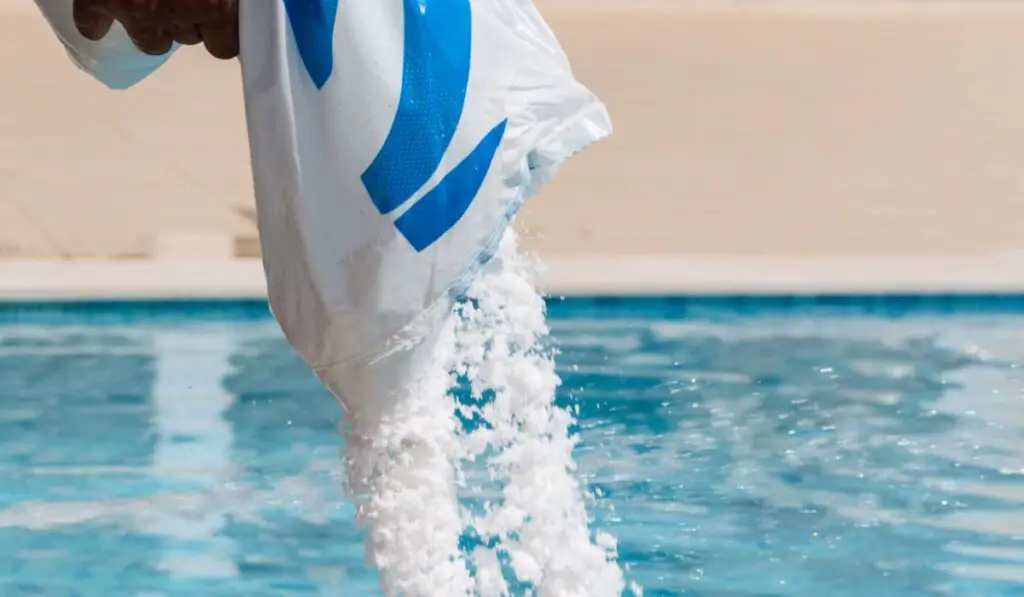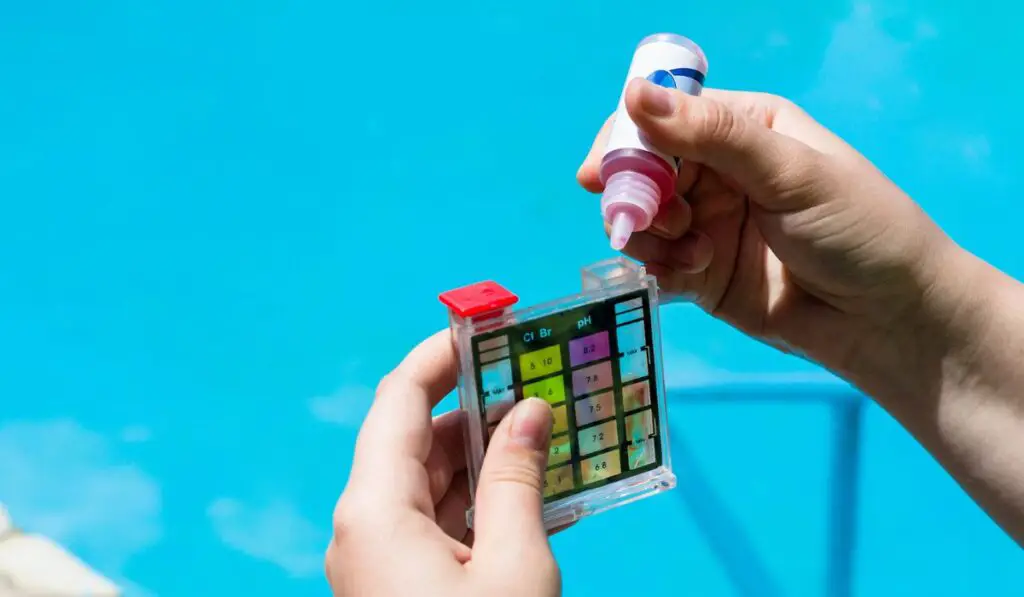A saltwater pool is a unique invention that allows you to have a relaxing pool to swim in without needing to add chemicals. The salt you add will turn into chlorine thanks to a chlorinator that is built into your pool. But how much salt do you need to add for this process?
Ideal salt levels for a pool are around 3,200 PPM. While the exact amount you need to add will depend on the size of your pool, if you are starting from scratch, a 10,000-gallon pool will need 267 lbs of salt. Test the current salt levels in your pool before calculating how much salt to add.
Need more information about how much salt to add to your pool? Let’s look at some details and the equation you can use to calculate how many pounds of salt you need to add.
How Much Salt Water Should I Add to My Pool?

How much salt you need to add to your saltwater pool will depend on both the size of your pool and how much water you are adding. During the beginning of the season, when you are filling your pool for the first time, you will need to add significantly more salt than you will later when you are just adding a few gallons to replace lost water.
Before you can add salt to your pool, you need to use a test kit(on Amazon) to find out what the current salt and chlorine levels are. You can also use a digital meter(on Amazon) to read the chemical composition of your pool water.
Once you know your current levels of salt, you can calculate how much salt you will need to add. In general, the ideal level of salt in a saltwater pool is around 3,200PPM.
Do note, though, that your salt doesn’t have to be exactly 3,200PPM. Salt levels between 2,700 and 3,400 PPM are considered to be sufficient, so don’t panic if your salt levels are slightly above or below 3,200 PPM.
How to Calculate the Salt You Need to Add
To find out how much salt you need to add in pounds, start by dividing your current salt PPM by 1,000,000. Then subtract this amount from 0.0032.
Next, take the gallon capacity of your pool and multiply it by 8.35. Take the number from above and multiply these two numbers, for example. If you are starting with no salt, you’ll need to add 267 pounds of salt to a 10,000-gallon pool just to give you an idea.
The good news is once you balance the salt in your pool water at the beginning of the season, you likely won’t need to add anymore as the salt is retained through the chlorination process. If you add water to your pool, however, you will need to add more salt. This is also true when it rains, as the rainwater dilutes your pool.
Does Salt Affect pH Levels?

Simply adding salt to your pool will not change the pH of your pool. But the whole reason you are adding salt to your pool is for the chlorination process.
Salt is a necessary aspect in the creation of chlorine. This means when you add salt to your pool and turn on the chlorinator, the pH level will increase the more salt you add. But the reason the pH is increasing is because of the chlorination process, not the salt itself.
Either way, because you will be changing the chemical makeup of your pool, it’s a good idea to test the water after you add salt. This will ensure the levels of chemicals are safe for swimming before you take a dip.
Signs There is Too Much Salt in Your Pool
Like any chemicals you can add to your pool, it is possible to over-salt your pool. When you add slightly too much salt to your pool, there won’t be any immediate damages, the water will likely just taste salty.
If you add an excessive amount of salt to your pool, like adding double the amount of salt you needed, then you do run the risk of damaging your pool. Excessive salt levels (above 6,000 PPM) can cause corrosion and damage to metal equipment (like ladders and handrails) in your pool.
Unfortunately, the only way to know if there is too much salt in your pool is to test using test strips or a digital tester. Some chlorinators may have a digital tester built-in and display your salt levels automatically, which can be convenient.
Otherwise, the only other sign there is too much salt in your pool is salty-tasting water. It is also possible if you add way too much salt that it won’t dissolve properly and feel odd as you swim. Confirm your suspicions with a digital tester before you take any action.
Signs There is Not Enough Salt in Your Pool
In the same way that there isn’t really a way to tell that there is too much salt in your pool, there also aren’t really any visual signs that there isn’t enough salt in your pool either. The only way to know your salt levels is through testing the water.
Because you won’t be able to visibly tell if your pool has enough salt, it’s a good idea to test it on a regular basis, especially after it has rained in your area or you have added water to the pool. This way, you can be absolutely sure of the salt levels in your pool.
